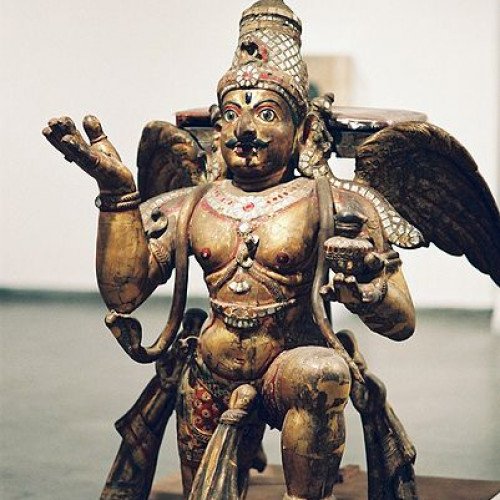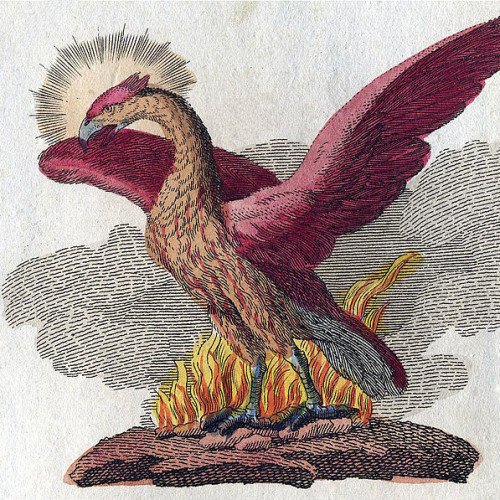Garuda VS Phoenix (mythology)

Garuda
Garuda (Sanskrit: गरुड Garuḍa; Pāli: गरुळ Garuḷa) is a legendary bird or bird-like creature in Hindu, Buddhist and Jain faith. He is variously the vehicle mount (vahana) of the Hindu god Vishnu, a dharma-protector and Astasena in Buddhism, and the Yaksha of the Jain Tirthankara Shantinatha. The Brahminy kite is considered as the contemporary representation of Garuda. Garuda is described as the king of birds and a kite-like figure. He is shown either in zoomorphic form (giant bird with partially open wings) or an anthropomorphic form (man with wings and some bird features). Garuda is generally a protector with the power to swiftly go anywhere, ever watchful and an enemy of the serpent. He is also known as Tarkshya and Vynateya.Garuda is a part of state insignia in India, Myanmar, Thailand, Cambodia and Indonesia. The Indonesian official coat of arms is centered on the Garuda. The national emblem of Indonesia is called Garuda Pancasila. The Indian Air Force also uses the Garuda in their coat of arms and named their special operations unit after it as Garud Commando Force. It is often associated with the greater adjutant (Leptoptilos dubius) stork.
Statistics for this Xoptio

Phoenix (mythology)
In Ancient Greek folklore, a phoenix (; Ancient Greek: φοῖνιξ, phoînix) is a long-lived bird that cyclically regenerates or is otherwise born again. Associated with the sun, a phoenix obtains new life by arising from the ashes of its predecessor. Some legends say it dies in a show of flames and combustion, others that it simply dies and decomposes before being born again.Over time the phoenix motif spread from its origins in classical folklore and gained a variety of new associations: Herodotus, Lucan, Pliny the Elder, Pope Clement I, Lactantius, Ovid, and Isidore of Seville are among those who have contributed to the retelling and transmission of the phoenix motif. Over time, extending beyond its origins in classical Greek folklore, the phoenix could variously "symbolize renewal in general as well as the sun, time, the Empire, metempsychosis, consecration, resurrection, life in the heavenly Paradise, Christ, Mary, virginity, the exceptional man, and certain aspects of Christian life". In the Motif-Index of Folk-Literature, a tool used by folklorists, the phoenix is classified as motif B32.